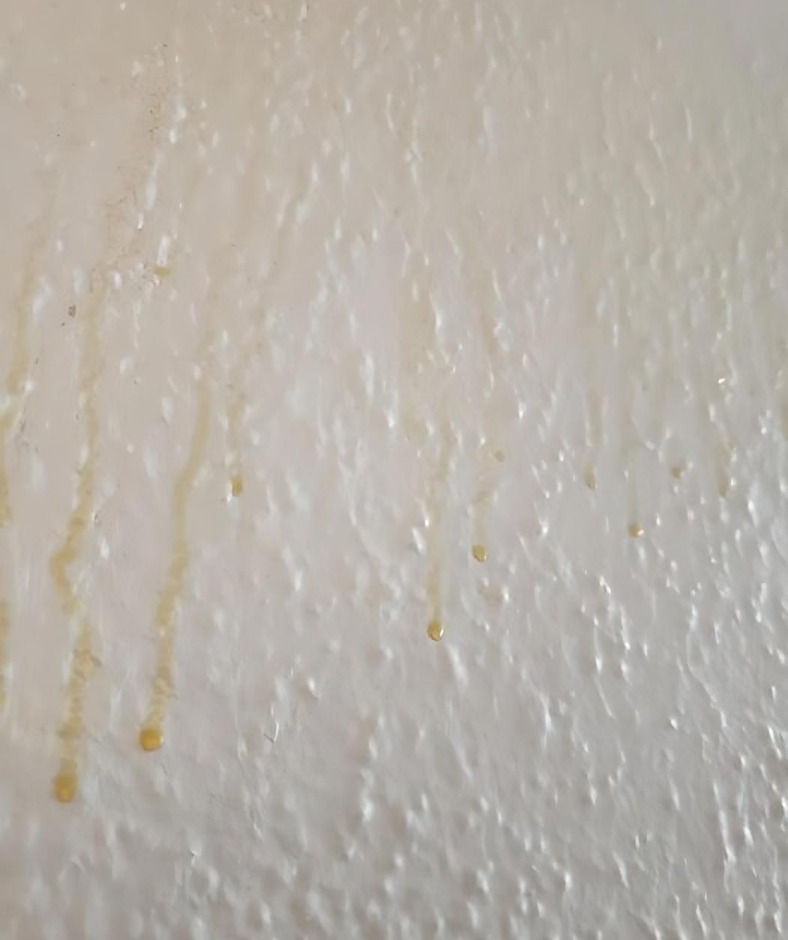If you’ve noticed mysterious yellow streaks running down your bathroom walls, it’s definitely a cause for concern. Bathrooms are supposed to be clean, relaxing spaces, so when strange stains appear, it can be unsettling. Are you wondering, “What’s causing this?” You’re not alone. Many people experience this issue, and the causes can vary. Let’s dive into the possible reasons behind these yellow drips and explore how you can tackle the problem.

Could It Be Mold? Why It’s More Than Just an Eyesore
Mold is a frequent bathroom invader, and it’s not just about aesthetics. Mold is a type of fungus that thrives in damp, humid environments—making bathrooms a prime location. It starts as microscopic spores that latch onto wet surfaces and spread quickly. While some molds might seem harmless, others can cause significant health issues. These range from allergies and respiratory problems to more severe chronic conditions if left untreated.
If those yellow stains on your walls come with a musty odor or coincide with allergy symptoms, mold could be the culprit. Bathrooms naturally provide the warmth and moisture that mold loves, especially when ventilation is poor.
What’s Fueling Mold Growth in Your Bathroom?
Mold in the bathroom is almost inevitable without proper care. After a steamy shower, moisture clings to walls, ceilings, and tiles. Without sufficient ventilation, this dampness creates the perfect breeding ground for mold. Even with regular cleaning, mold can hide in sneaky spots like behind toilets, under sinks, or on ceilings.
When mold develops, it can appear as yellow or black streaks, sometimes in areas you wouldn’t expect, such as around windows, on shower curtains, or near plumbing fixtures. If yellow drips are showing up, mold has likely taken hold in your bathroom walls.
What Else Could Be Causing Those Yellow Streaks?
While mold is a leading suspect, it’s not the only explanation. Here are some other potential causes:
- Nicotine Residue
If previous residents of your home were smokers, nicotine could be the problem. Nicotine residue often seeps through paint, especially in damp environments like bathrooms. Even a fresh coat of paint might not completely block nicotine from reemerging as yellow streaks. - Soap Scum and Hard Water Deposits
A combination of soap scum and minerals from hard water can create yellowish stains. Hard water leaves mineral deposits on surfaces, and when mixed with soap, these can form streaks on your bathroom walls. - Yellow Mold and Mildew
Mold isn’t always black—yellow varieties exist too. Yellow mold, often mixed with soap scum or moisture, can be just as harmful as other types. It’s essential to address it immediately to prevent health risks.
How to Prevent and Eliminate Yellow Streaks in Your Bathroom
The best way to deal with these stains is to stop them before they start. Here are practical tips to maintain a clean, mold-free bathroom:
Prevention Tips
- Improve Ventilation
Ensure your bathroom is well-ventilated by using exhaust fans, opening windows, or keeping the door ajar after a shower. Better airflow means less moisture—and less mold. - Wipe Down Surfaces
After showering, take a moment to dry walls and tiles. This simple habit prevents moisture buildup that mold feeds on. - Use Mold-Resistant Paint
If you’re repainting, opt for mold-resistant paint. These products are specially formulated to discourage mold growth on walls. - Clean Regularly
Regular cleaning is key. Use bathroom-specific cleaning solutions to tackle soap scum and mold before they become a problem.
How to Clean Mold the Right Way
If you already have mold or yellow drips on your walls, don’t panic. Here’s how to handle the issue:
- Bleach Solution
For tiles and other non-porous surfaces, mix one cup of bleach with a gallon of water. Scrub the area thoroughly, and ensure the bathroom is well-ventilated during cleaning. - Natural Alternatives
Prefer something gentler? Vinegar or hydrogen peroxide can be effective mold fighters without the harshness of bleach. Spray the solution on the affected area, let it sit, and then scrub. - Protect Yourself
Always wear gloves and a mask when cleaning mold. You don’t want to inhale spores or expose your skin to cleaning chemicals. - Call Professionals if Needed
If the mold is widespread or deeply embedded in walls, professional help may be necessary. Experts have the tools and expertise to eliminate mold for good.
Conclusion: Act Quickly to Protect Your Bathroom
Yellow streaks on your bathroom walls are more than just a cosmetic issue—they signal an underlying problem. Whether it’s mold, nicotine, soap scum, or hard water deposits, addressing the cause quickly is essential. Regular maintenance, proper ventilation, and prompt cleaning can keep your bathroom fresh and healthy.
Don’t ignore the warning signs. Take action today to preserve your bathroom’s cleanliness and your family’s well-being. And if the problem feels too big to handle, don’t hesitate to call in the pros. After all, a clean bathroom is a happy bathroom!





